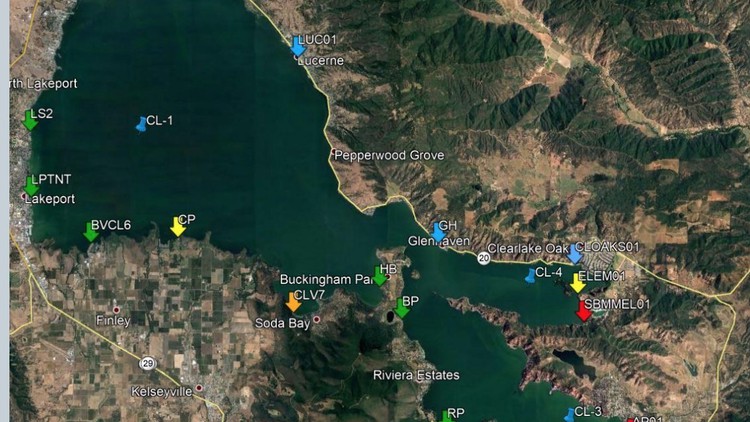
Level 1
☑ Understand basic water quality principles and practices
☑ Define cyanobacteria, algal blooms, cyanotoxins, HABs and cHABs
☑ Develop familiarity with agencies addressing HABs and fish kills
☑ Know how to identify and report harmful algal blooms
☑ Attain proficiency with iNaturalist and how to report fish kills
Citizen science, the act of engaging local people in observing, measuring, and monitoring ecosystems, is one of the most powerful tools a community can harness to understand and improve their surrounding environment.
This independent study on Harmful Algal Blooms (HABs) and Fish Kills aims to provide community members with an applied understanding of these specific ecological threats to Clear Lake, and how they can be observed, reported, measured, monitored, and mitigated.
Climate change is exacerbating these occurrences: higher lake temperatures increase the frequency of algal blooms and their subsequent die-off; and longer drought periods increase fire frequency and intensity, resulting in loss of vegetative cover and soil erosion, increasing run-off and nutrient loading in Clear Lake which lowers oxygen content.
To better address HABs and fish kills on Clear Lake, local tribes joined together to liaise with an array of city, county, state, and federal agencies with the formation of the Clear Lake Cyanobacteria and Cyanotoxin Task Force. Composed of agency staff representing environmental protection, human health, water resources, and state parks, the Task Force monitors lake nutrient, pollutant, and toxin levels, and meets routinely to discuss sampling results, associated field studies and agency actions.
By taking this course, you become a part of interagency efforts to help resolve urgent water quality issues on Clear Lake. You will learn about the major threats to water quality that impact your health, and the health of human and wildlife communities. You will learn how to identify and report harmful algal blooms and fish kills, so that local, state, and federal agencies receive better data and can take action.
English
Language
Entry-level course
Introduction
Introduction QUIZ
Sections 1.1-1.2
Sections 1.1-1.2 QUIZ
Sections 1.3-1.4
Sections 1.3-1.4 QUIZ
Sections 1.5-1.6
Sections 1.5-1.6 QUIZ
Section 1.7
Section 1.7 QUIZ
Sections 1.8-1.9
Sections 1.8-1.9 QUIZ
EXTRA CONTENT – 1: Sample materials from Level 2 (Intermediate) for this course
EXTRA CONTENT – 2: Sample materials from Level 2 (Intermediate) for this course